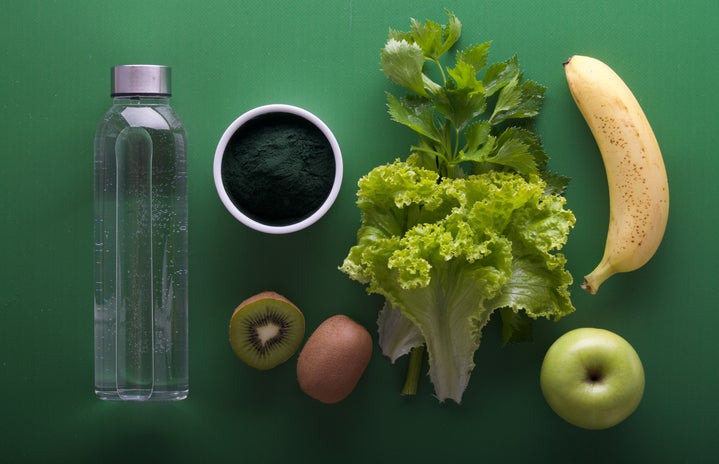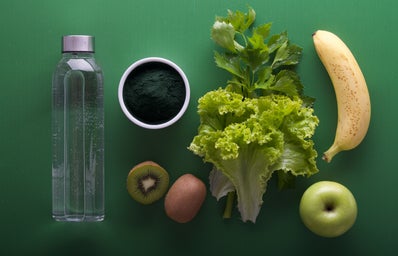**Trigger warning: Eating Disorders**
I’m quite sure we’ve all seen “What I eat in a day” (WIEIAD) content in one form or another. The concept is simple: Walk viewers through every piece of food you eat within 24 hours either through videos or pictures. Even if you’re not on “foodtok” or “food-stagram” where this type of content thrives specifically, WIEIAD content is quite literally everywhere. Whether it’s vacation related content, outrageous food challenges, or health and fitness posts, it finds many ways into our feeds even if we’re not looking for it. The hashtag #WhatIEatInADay alone has 1.7 million videos under it, which doesn’t account for the hundreds more titles these types of videos can appear under. Although anyone can make this type of content, the surge of A-list celebrities who are hopping on the trend has truly brought it into the mainstream. Kylie Jenner recently posted her own WIEIAD video to Tik Tok, amassing an incredible 16.2 million likes. Harper’s Bazaar, an American magazine, produces a now 102-episode Youtube series entitled “Food Diaries”, in which celebrities are interviewed to discuss their daily food intake. It’s safe to say that if you’re online, you’re consuming this content even if by accident.
I for one have a tricky relationship with these posts. As someone who’s had a tumultuous relationship with food for most of my teenage and adult life, it’s all too easy for me to see the explicitly dangerous aspects of this trend. Although it might not be the creators’ intentions, their content implicitly acts as dietary advice for viewers. Influencers influence, it’s in the name, so their dietary choices will have an effect on their viewers. But unlike some perhaps more lighthearted topics like fashion and beauty, influencing people on their food decisions can have serious consequences. A study by researchers from the University of Windsor has shown time spent on social networking spaces is “significantly related” to higher eating disorder symptoms/concerns in young adults and is associated with higher levels of dieting. Similarly, Chelsea Kronengold, a spokeswoman for the National Eating Disorder Association, has noted that although social media does not directly cause disordered eating, “it can contribute to an eating disorder”. For someone in a rough space mentally or for someone struggling with food already, WIEIAD videos can open up an opportunity for comparison and guilt.
Although a lot of creators posting this content do not have these intentions and just want to hop on a trend that thousands of people and celebrities alike are taking part of, a quick search through the WIEIAD tag on TikTok will bring up some pretty harmful content. Although I’m in a place now where I can look through this content and not be affected, a couple years ago these videos did a number on my mental health. I personally found a lot of WIEIAD harmful, and although I would try to avoid them, they kept popping back onto my FYP. Even if these creators weren’t intentionally trying to advocate for any harmful eating practices, it was hard for my mind to stop comparisons and guilt from consuming me. It’s now been revealed that TikTok specifically feeds new teenage users of their platform harmful eating disorder and self-harm content within minutes of joining their platform, so unfortunately the algorithm is not in favor of promoting positive relationships with food in the first place.
How, then, can we cut through the harmful and move towards the helpful? I’ve got a couple of variables that I look out for whenever this kind of content pops up on my feed. Firstly, as soon as I see a WIEIAD that includes body checking, I immediately skip it. Body checking is the act of seeking information about your body and this manifests itself online by creators including images of their physique. Although this might be legitimate for fitness influences, its use in general WIEIAD videos feels dangerous to me. Even if it isn’t explicitly said, showing your body and then showing what you eat implies people can look like you by eating the same as you. This won’t happen. . Every body is different, with so many different factors at play, and every body’s food needs are so incredibly varied . So, if I see someone showing off their slim waist or abs as the intro to their WIEIAD, they’ve lost me already. Secondly, anybody offering nutritional advice in their WIEIAD slips into the harmful for me for similar reasons. Creators are not nutritionists and though I’m sure that some have legitimate knowledge on our body’s health and needs, too many are able to pass their personal opinions off as health facts. Again, we all have such different nutritional needs and circumstances, so influences talking me through what they eat in a day to lose weight or protect their gut really doesn’t sit well with me.
This being said, I recognize it’s a lot to put on creators of WIEIAD content, especially those who genuinely mean zero harm. Despite problems with the algorithm and the videos out there that are potentially harmful, here is a good amount of content that focuses on the lighthearted side of eating. I personally enjoy when creators show themselves eating fun foods or associating what they eat with enjoying life and new experiences. To directly combat the negative factors I discussed earlier, I love content that directly mentions the flaws in WIEIAD content. When creators repeatedly mention that every body is different or to listen to your own individual needs, this feels so refreshing amongst the backdrop of potentially harmful content. And there is a good amount of creators who do seem to try to bring a light hearted spin to the trend. My personal favorites include Brittani Lancaster, who has a series on TikTok titled “What I eat in a day that won’t make you feel like sh*t”. Karissaeats is a creator who showcases what she eats in a day whilst traveling, and the focus on these videos definitely feels more focused on the experience of trying new foods rather than the dietary implication. I actually make my own videos which I post to both TikTok and instagram, in my own attempt to interrupt any potentially harmful content and make WIEIAD videos that specifically focus on food positivity and the joy of food.
WIEIAD content can genuinely be helpful and positive, but it can be incredibly harmful either accidently or very intentionally. Social media is a hard space to negative anyway, and adding the difficult and sometimes triggering factor of food-related content only makes things a little bit more complicated. My ethos is to curate your feed, tell the algorithm when it gives you content you don’t like, and if all else fails, block tags or creators all together. There is so much endless joy in food and eating, something that some WIEIAD content creators are trying to celebrate. Although you might have to weed through the bad, the good is out there, and there’s so much positivity in it.


